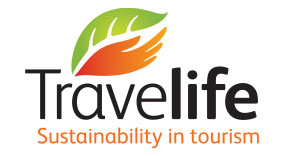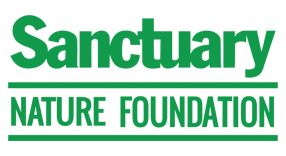TOFTigers highlights the needs of the future 2017 to 2032

A Fifteen year National Wildlife Tourism Action Plan for India
As submitted by TOFTigers on 15th February 2016 to the Director General, Ministry of Environment and Forests, March 2016 as part of the draft MOEF’s National Wildlife Action Plan 2017 – 2032
PREAMBLE
TOFT India Wildlife Association, a registered charity in New Delhi, have sort to comment largely on the Section X – the management of Tourism in Wildlife Areas in this plan, but the comments also pertains to other sections including XI People’s participation in Wildlife Conservation, XII Conservation Awareness and Outreach, XVI – Ensuring Sustained Funding for wildlife sector and XVII Integrating with other sectoral Programmes – to name the most prevalent.
Tourism to Protected Areas in India over the last fifteen years has been consigned to a ‘small box’ labelled ‘tourism’ and marked in big red letters – Open at your peril.
This is not wholly surprising given the numbers, the demand and the mushrooming of lodge providers, services and infrastructure to support this around some parks. This is also not surprising because nature tourism is a difficult business like any other, that needs long term planning, good rules, common sense regulations and careful monitoring by Governments like any other industry. Furthermore it is not some social enterprise that will automatically save wildlife or employ local people unless it is incentivised, encouraged, mandated for in law and closely monitored by a necessary agency set up to do this. Lastly it’s not altogether surprising because so little thought and action has been invested in its long term vision, development and scope. Tourism can however be a partner and stakeholder in conservation efforts – if you allow it to be, with a pragmatic, common sense ‘road map’.
Historically GOI and MOEF has seen tourism as a necessary evil – and the result is exactly what you don’t want – and indeed what most nature tourism professionals do not want either! This has also meant a colossal loss of potential income to PA’s to help protect and conserve, at a time when budgets have been tight or slashed. It’s also meant ongoing community and wildlife conflict for the departments, where potential novel solutions could have been effected.
In the next fifteen year plan – I believe we need this relationship to change 180 degrees, with both GOI’s and the tourism sector’s approach. Turn this perceived threat into a viable opportunity – as a conservation tool. Many other countries have done this – and India must too. The present National Wildlife Action Plans objectives and actions do not do this with enough intent.
So let’s, from 2017 to 2031, make nature tourism a stakeholder and revenue generator for protection and conservation, a local job creator, a poverty alleviator, a rural community support and empowerment mechanism, a restoration and rewilding tool, an anti-poaching tool, and an educational tool – in your efforts to turn natural habitat – which all too often is seen as worthless – into something that is priceless.
The truth is that tourism, in all its forms, is set to grow by an astounding number, and PA’s should now be planning for 50 million visitors per annum in 30 years’ time from the few millions today, not dissimilar to that seen in America’s Protected areas. This is frankly the reality you face, and tourism has been set by the GOI as one of its five key economic drivers. How you plan for this, how you monetarise this, how you legislate for it, encourage it, manage and monitor it – in the next few years will determine the long term fate – I believe – of all PA’s (and many reserve forests) in India.
A recent WWF/Cambridge/Princeton University report (attached) stated worldwide visits to PA’s are now worth US$600 billion per annum, and yet only a tiny amount, US$10 billion is ploughed back into them by Governments each year for protection. In effect for every US$1 spent by government on protection and conservation, US$60 is produced – an extraordinary economic return by anyone’s reckoning. Use this argument in your pitch to GOI for more resources to protect wild landscapes, and no self-respecting government could possibly refuse you!
KEY RECOMMENDATIONS
i) Ecotourism can, and will only be truly effected when the legal parameters, viz-a-viz wildlife tourism, are made clearer.
ACTION Make wildlife tourism a legal ‘forest activity’, and clarify existing Forest laws with up to date legislation to give tourism, communities, NGO’s and potential investors in conservation/rewilding a better legal framework to work within.
ii) Wildlife Tourism will only work where it is in genuine partnership with FD’s, local communities and other interested parties. The present top down decision making process will not build the necessary relationships.
ACTION Invest in expertise in long term planning, enhance training, build consultation and joint decision-making capabilities into all that policies and procedures that affects visitors and providers, through PA’s Lodge Associations, Panchayats, Tourism and wildlife NGO’s and LACs.
iii) Encourage and implement a policy that ensure wildlife tourism is better able/incentivised to spread further and thinner around PA’s landscapes, using all park gates and to ensure the benefits are spread further and impacts are reduced from present ‘hotspots.’
ACTION Encourage specialisations of activities or specific interest areas of PA’s to move visitors around zones. Source, plan and promote alternatives to game drives including birding, hiking, trekking, walking, hides, camping etc
iv) Encourage, enhance and use PA’s as viable and effective revenue generators, with these monies ploughed back into park and protection budgets, tourism management and monitoring and local community support.
ACTION Consider and look at other countries park pricing models and match these with visitor value expectations. Allow, where possible/feasible, high revenue, low visitor volume models to develop in key or fragile areas, and visa-versa in less fragile areas. Allowing premium PA pricing models which can/will subsidise local visitor rates/entry in other parts or areas.
v) Plan, develop and implement a better range of nature based activities and experiences that allow visitors, students and children the ability to touch, see, imbibe and experience the wild, by day and night, in a way that inspires, educates and empathises all to value of biodiversity, both inside and outside parks, in buffers and corridors.
ACTION Relook at each PA’s unique selling points viz a viz nature tourism, and work up comprehensive plans and promotions to ensure a variety of ways in which visitors can access nature. This would include nature, kids and student camps, research study areas, walking, trekking, hides, canoeing opportunities, field course areas etc etc.
vi) Undertake comprehensive, long term planning, including land use planning around borders of PA’s and park gates to ensure key habitats like forest corridors, riverine habitat and buffers areas are not overdeveloped, but instead maintained, enhanced and/or expanded and restored, as part of any tourism action plan.
ACTION Consider, plan for, invest in and legislate for farms to forests programmes, community or PPP nature reserves, all of which can be worked to support such policies. This should be done prior to the arrival of mass tourism – or the opportunity will be lost!
vii) Ensure a more proactive approach by States to dictate and direct the type of nature tourism and activities that it wants, and where these can be done.
ACTION Encourage and incentivise tourism specialisation, target investment to match it, cooperate with local communities to effect it. This will ensure long term sustainability. (This is the equivalent of City Smart IT hubs for example)
viii) Recognise that all formats of tourism, from camping to local homestays, budget lodges to luxury properties all have a part of play in ensuring a sustainable nature tourism model, greater access for all and better public and political support for wildlife conservation.
ACTION: GOI needs a consistent mission and messaging that is worked through all Ministries about tourism, its value, needs, support and necessary regulation.
ix) Effect more research on visitor carry capacities, ensure continued visitor monitoring on wildlife and habitat, and lay down scientifically based capacity limits – or limits to acceptable change.
ACTION. Encourage and incentivise more research and monitoring across all parks through private and public institutions, colleges and local NGO’s.
x) Massive improvement is needed in the quality and standard of guiding and driving within PA’s, with better training, long term courses, language skills, meritocratic ranking and specialisation required to ensure better nature driving, interpretation and nature education for visitors. These guides should be trained to be both eyes and ears of the Forest department too, effecting both visitor behaviour, but also wildlife monitoring and forest support services as part of their job. Skilled independent naturalists should be a critical part of this process.
ACTION. Invest in better training structures, training colleges and a nature guide training association (s)
xi) Legislate for mandatory EIA’s for all tourism enterprises in ESZ’s, and set mandatory guidelines for accommodation and service providers, with regards to land use, building standards, fencing/barriers, water, waste disposal, local employment and training and habitat restoration, with strict reference to a PA’s visitor carry capacity.
ACTION Encourage, authorise and incentivise State Ecotourism Boards and independent certification agencies to monitor these.
xii) Most online park booking systems are unfit for purpose, leading to widespread misuse, corruption, loss of park and tourism revenue, and visitor frustration.
ACTION Upgrade online booking systems to ensure a fair and equitable access to nature at all times. If trains, airlines, event and theatre companies can do a proper reservation system – so can parks!





